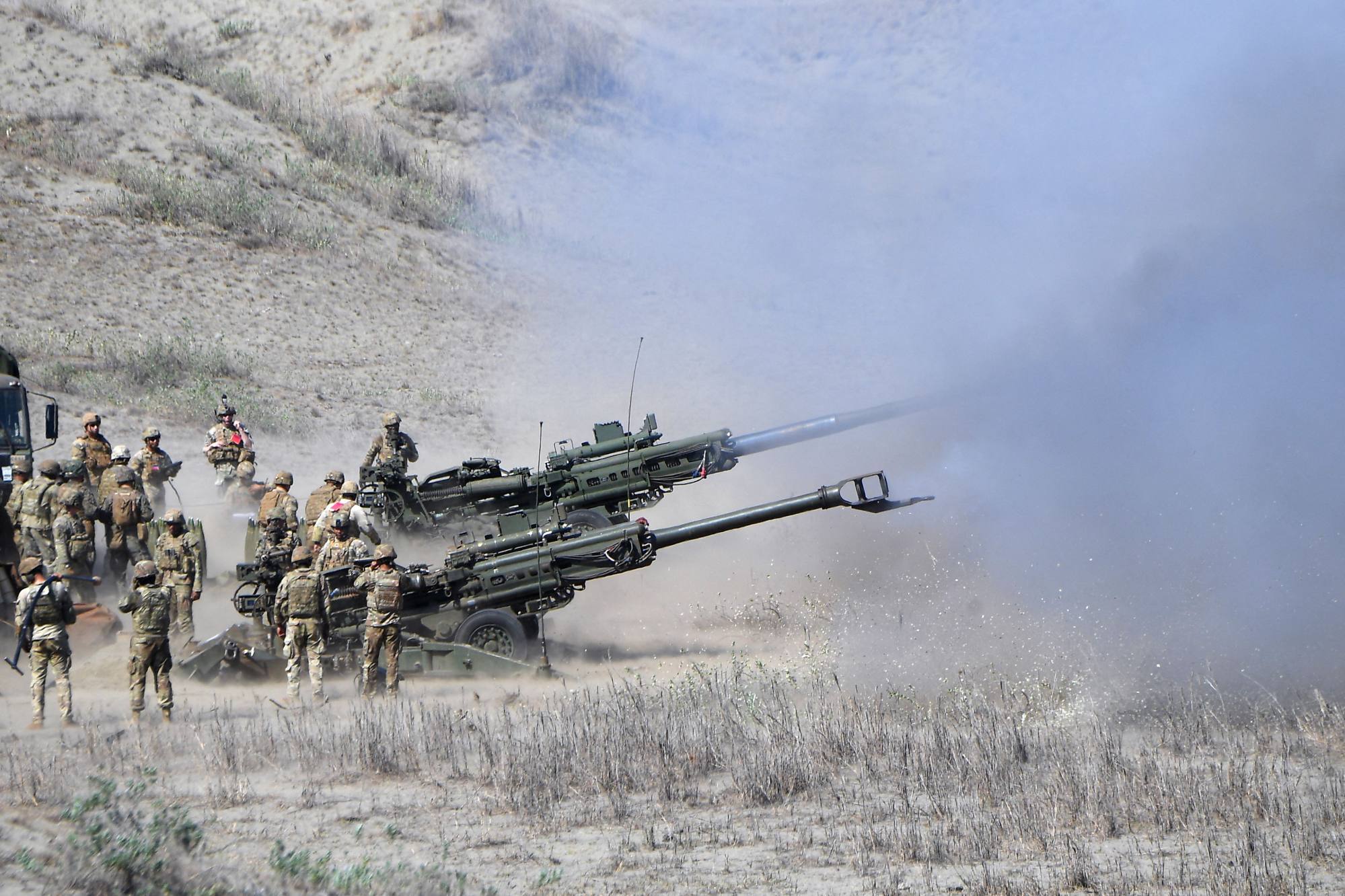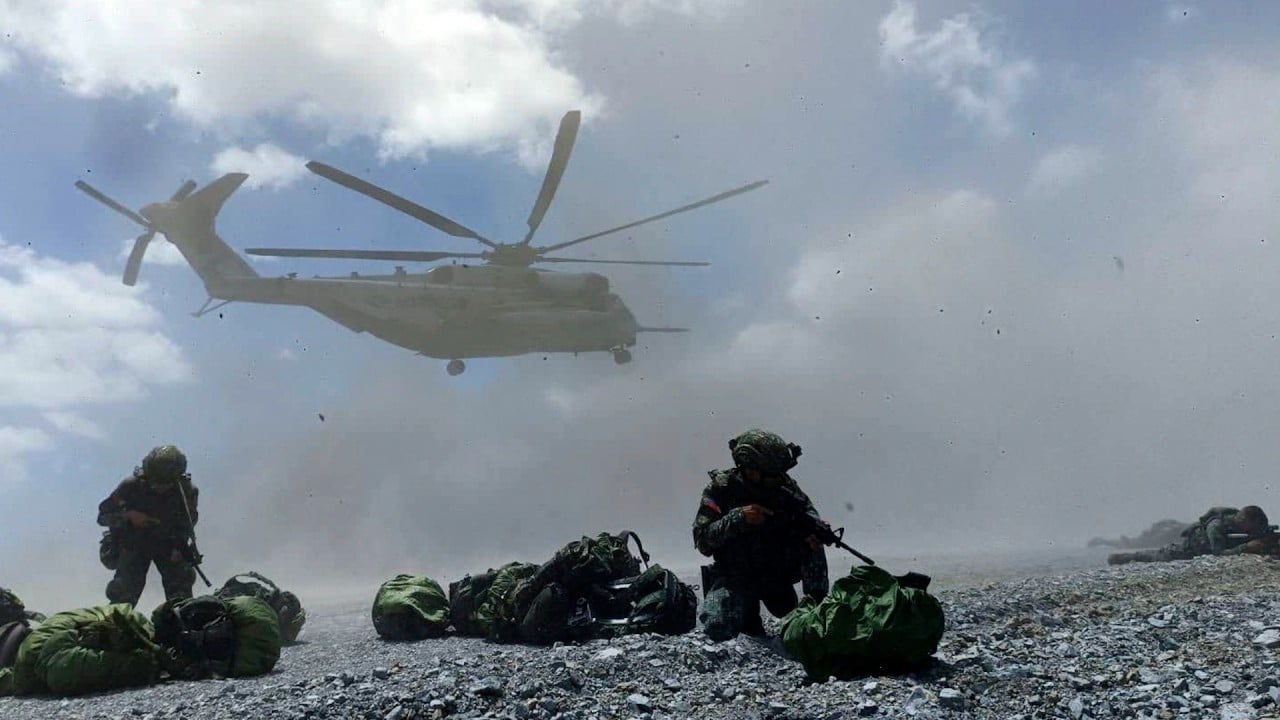
US-Philippines drills: island retaking, ship sinking simulate Taiwan, South China Sea conflicts
- Island-retaking exercise in far northern Philippines appears to be in preparation for hostilities breaking out over Taiwan, observers say
- Sinking of Chinese-made Philippine navy ship, repelling of invasion force among other key exercises, as troops test viability of US missile deployment
Their mission was to practise retaking the remote island, which lies along the strategic Bashi Channel, from a foreign invader.

For the first time, some of this year’s exercises are taking place beyond the 12 nautical-mile boundary of the Philippines’ territorial waters. Fourteen other nations sent “observers”.
The presence of two Chinese navy ships in the South China Sea during the group sail exercise prompted Balikatan 2024 spokesman Army Colonel Michael Logico to say on April 30: “I thought there are just 14 countries that will be sending observers. Apparently, there is a 15th country that sent observers.”
Washington-based defence journalist Aaron Matthew Lariosa, who writes for the US Naval Institute and Naval News and has covered multiple Balikatan drills, said a similar island-retaking exercise during last year’s event took place on an island facing the South China Sea rather than the northern Philippines.
He said this year’s exercise was different because it appeared to be in preparation for a real-world scenario: hostilities breaking out over Taiwan.
Such a conflict could have serious ramifications for the Philippines, even if it was not directly involved in the hostilities, he said.
“Given the Philippines’ proximity, a cross-strait crisis can have very tangible spillover effects in [terms of] either refugees fleeing the conflict or military forces occupying the strategic islands for their own use,” he told This Week in Asia on Tuesday.
“It should be remembered that the Batanes [islands, which include Itbayat] were the first [areas] occupied by the Japanese in their invasion during the Pacific War.”
“The islands are very remote, isolated, they’re difficult to get to with rugged terrain and rapidly changeable weather,” he said.
“Under camouflage and because they are smaller and more mobile, it’s also easier to conceal [missile launchers like the Typhon]” from even spy satellites.”
The Typhon missile system was not fired during the Balikatan drills, but a similar system was included to test the feasibility and effectiveness of deploying it on land using an airlift.

Besides the island-retaking drill, Monday also saw a separate exercise focused on repelling an invasion force, which took place along the sand dunes of Laoag in Ilocos Norte on the northwestern tip of Luzon.
This large-scale war game included 150 Australian soldiers from the first battalion of the Royal Australian Regiment.
The climax of the 19-day exercises will take place on Wednesday with a multilateral “maritime strike” or sinking of the BRP Lake Caliraya, a 4,700-tonne Philippine navy vessel built in China.
The Philippine navy will, for the first time, fire an SSM-700K C-Star (Haeseong) anti-ship cruise missile at the Caliraya, which was towed on Tuesday to its target location beyond the 12 nautical-mile boundary of the Philippines’ exclusive economic zone.

Logico said in a briefing on April 17 that the military chose locations “that gave us the most training value, the most challenges” – including weather and capability issues – and “how to integrate the capabilities of our treaty allies”.
This year’s Balikatan drills come amid heightened tensions between Beijing and Manila after numerous maritime confrontations involving their vessels in the South China Sea.
“What makes this [year’s] exercise notable is its occurrence during the Armed Forces of the Philippines’ shift to the Comprehensive Archipelagic Defence Concept, which looks to orient the country’s military against external threats,” Lariosa said.
“However, due to the weakness of its forces, the Philippines still has to remind potential aggressors that its only treaty ally is prepared to help in certain contingencies.”


